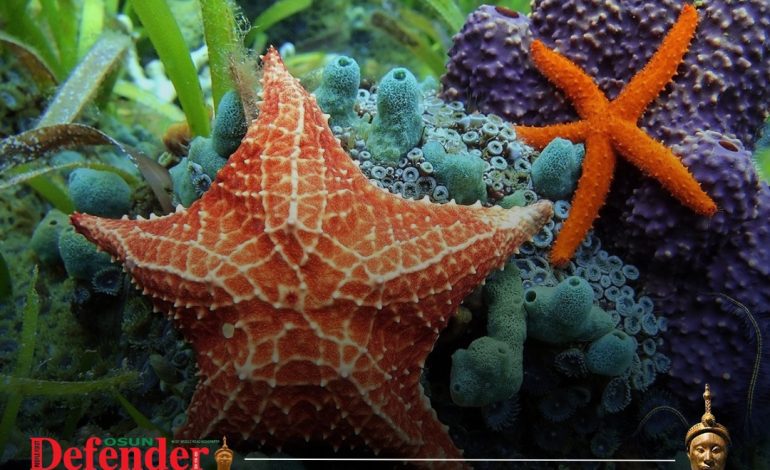In the animal kingdom, a brain is generally considered an essential organ, enabling creatures to perform complex tasks like thinking, feeling, and responding to their environment. However, not all animals possess a brain. Some have evolved in ways that allow them to survive and function without this central organ, relying on alternative systems to carry out their basic life processes. These fascinating creatures challenge our understanding of biology and provide insight into the diverse ways life has adapted over millions of years.
Animals without brains do not have a traditional nervous system, yet they manage to move, feed, reproduce, and respond to external stimuli. Many of these organisms are simple in structure and live in environments where a brain is not necessary for survival. Instead, they rely on networks of nerves or cells that act independently to maintain vital functions.
This evolutionary trait allows them to thrive in their respective ecosystems, often developing other specialised abilities to make up for the lack of a central nervous system.
Despite their simplicity, brainless animals have managed to outlive many species that possess far more complex systems. These organisms highlight the diversity of life on Earth, showing that survival doesn’t always depend on intelligence or complex decision-making.
Studying these animals can offer important clues about early life forms on our planet and how life has evolved to meet different environmental challenges. In this feature article, Osun Defender explores five intriguing animals that do not have a brain, examining how they function, adapt, and survive in their natural habitats. From simple sponges to complex jellyfish, these creatures provide unique perspectives on life without a brain.
1. Sponges
Sponges are among the simplest multicellular organisms, and they lack a brain entirely. Found in oceans all around the world, these ancient creatures have been around for over 500 million years. Despite their lack of a brain or nervous system, sponges are highly effective at filtering water and capturing microscopic food particles. Their bodies are composed of specialised cells that work independently to maintain the organism’s functions.
The absence of a brain in sponges is compensated by their unique cellular structure. They have pores that allow water to flow through their bodies, carrying food and oxygen. Sponges rely on specialised cells called choanocytes to trap food particles, which are then digested. This system is highly efficient for their survival, allowing sponges to remain stationary and still meet their nutritional needs.
Furthermore, sponges do not require a nervous system because they are sessile animals, meaning they do not move. Since they remain anchored to one spot, there is no need for rapid response mechanisms to environmental changes. Instead, sponges rely on the passive flow of water to bring nutrients and carry away waste, enabling them to survive without the need for a brain.
Although sponges lack a brain, they are incredibly resilient organisms. They can regenerate lost parts and even grow back after being damaged. This ability has allowed them to thrive in marine environments, despite their simple structure. In fact, sponges play an essential role in maintaining healthy ecosystems by filtering large volumes of water and providing habitats for other marine life.
2. Jellyfish
Jellyfish are another group of animals that do not have a brain, yet they have managed to survive for hundreds of millions of years. Instead of a brain, jellyfish possess a nerve net, which is a network of nerves spread throughout their body. This nerve net allows jellyfish to perform basic functions, such as movement and feeding, without the need for centralised control.
Jellyfish rely on their simple nervous system to detect changes in their environment. They have specialised cells called cnidocytes, which contain stinging structures used to capture prey and defend against predators. The nerve net coordinates the jellyfish’s movements, enabling them to pulsate and propel themselves through the water, despite the absence of a brain.
The lack of a brain in jellyfish doesn’t mean they are entirely mindless creatures. They have evolved efficient mechanisms for survival in their aquatic environments. For instance, they use light-sensitive organs called ocelli to detect light, helping them navigate and orient themselves. Some species of jellyfish even exhibit a form of migration, moving up and down in the water column to find food or avoid predators.
Jellyfish have thrived in oceans worldwide, adapting to a wide range of environments from deep-sea habitats to coastal regions. Their simple body plan and effective nerve net have allowed them to endure for millions of years, highlighting that brains are not always necessary for survival.
3. Sea Stars
Sea stars, commonly known as starfish, are marine animals that also lack a brain. Like jellyfish, sea stars possess a nerve net instead of a centralised brain. This nerve net allows them to perform basic functions such as movement, feeding, and responding to their surroundings. Sea stars can sense light, touch, and changes in their environment through this simple network of nerves.
Sea stars move using tube feet located on the underside of their arms, which are controlled by the water vascular system. This system pumps seawater into their tube feet, allowing them to extend and retract, providing locomotion. The nerve net helps coordinate this movement, enabling sea stars to slowly crawl along the ocean floor in search of food.
READ ALSO
•Man Remanded For Alleged Defilement Of Minor
•Economy: I Miss You, Crying Family Man Sends Note To Ex-President Buhari
Despite their lack of a brain, sea stars are skilled hunters. They primarily feed on molluscs, such as clams and mussels, by prying open the shells with their strong arms. Once the shell is open, sea stars extrude their stomachs out of their mouths and into the prey, digesting the soft tissues inside.
This unique feeding method allows them to consume prey much larger than their mouth would typically allow.
Sea stars are also known for their remarkable regenerative abilities. If they lose an arm, they can regenerate it over time, and some species can even regrow an entire body from a single arm. This ability to regenerate, combined with their simple nervous system, has enabled sea stars to thrive in various marine environments for millions of years.
4. Sea Cucumbers
Sea cucumbers are another group of brainless animals that inhabit the ocean floor. They have a very simple nervous system, lacking a central brain, but are still capable of performing essential functions like locomotion, feeding, and self-defence. Sea cucumbers move by contracting muscles in their body wall and using tiny tube feet, much like sea stars.
Though they do not have a brain, sea cucumbers possess a network of nerves that helps them respond to their surroundings. This nervous system is concentrated around their mouth and digestive system, enabling them to feed efficiently. Sea cucumbers are deposit feeders, meaning they consume organic matter from the seabed. They play an essential role in marine ecosystems by recycling nutrients and keeping the ocean floor clean.
One of the most fascinating defence mechanisms of sea cucumbers is their ability to expel their internal organs when threatened. This process, known as evisceration, allows them to escape predators while sacrificing parts of their body. Remarkably, sea cucumbers can regenerate these lost organs over time, ensuring their survival in hostile environments.
Despite their lack of a brain, sea cucumbers are highly adaptable and resilient creatures. They have evolved to thrive in a variety of habitats, from shallow waters to the deep sea. Their simple nervous system and unique defence strategies have allowed them to persist for millions of years, contributing to the health of marine ecosystems.
5. Corals
Corals, which form the backbone of some of the world’s most biodiverse ecosystems, also lack a brain. These simple marine animals live in colonies and rely on a basic nerve net to carry out their life functions.
Corals are sessile organisms, meaning they do not move once they establish themselves on a surface, so their need for a complex nervous system is minimal.
Corals capture food using tentacles that are equipped with stinging cells, much like jellyfish.
These tentacles are controlled by the nerve net, allowing corals to sense when prey is nearby and react by extending or retracting their tentacles. Despite their simplicity, corals are highly efficient at capturing small planktonic organisms for nourishment.
One of the most important aspects of coral life is their symbiotic relationship with algae known as zooxanthellae. The algae live within the coral’s tissues and provide energy through photosynthesis, which helps the coral survive. This relationship is so vital that most coral reefs would not exist without the zooxanthellae, and yet, no brain is required for this intricate partnership.
Coral reefs are some of the most vital ecosystems on Earth, supporting a vast array of marine life. Though corals themselves are brainless, their colonies create the foundation for these complex ecosystems. Their ability to thrive without a central nervous system speaks to the diversity and adaptability of life in the ocean.

Sodiq Lawal is a passionate and dedicated journalist with a knack for uncovering captivating stories in the bustling metropolis of Osun State and Nigeria at large. He has a versatile reporting style, covering a wide range of topics, from politics , campus, and social issues to arts and culture, seeking impact in all facets of the society.










